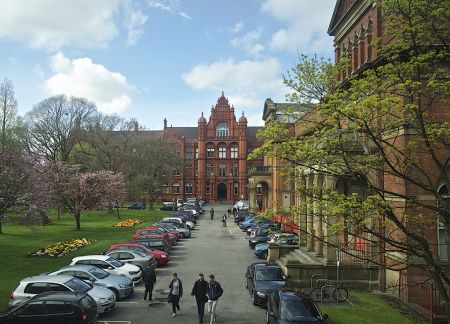
Scientists lead Red Fire Project in Chernobyl
Tuesday 11 April 2017
SCORCHING forest fires can burn so hot they sterilize the soil, leaving it bare for years. Some species grow back quickly, and others like oak and black cherry can take several decades to return.
But what happens in a radioactive forest? What happens in Chernobyl or Fukushima if there is a fire?
Wildfires in these zones cause concern as burning can release plant or soil-locked caesium, strontium and plutonium into the air. They can also tell us much about how radionuclides – radioactive atoms – impact on the environment and potentially upset natural cycles.
In a unique study, Dr Mike Wood, reader in applied ecology at the University of Salford, is looking at the aftermath of the 2016 fires in the Red Forest, so called because the 1986 Chernobyl nuclear disaster turned 4-6 sq km of nearby conifers a reddy-orange.
Award-winning
The award-winning researcher and his colleague Dr Neil Entwistle are conducting NERC-funded research into how the radioactivity is affecting post-fire recovery, and how fire affects the radioactive environment.
“It is possible that areas of higher radiation will exhibit a different recovery trajectory - slower vegetation regrowth, dominance of different species and such like,” explains Mike.
“The point is, there is nowhere like the Red Forest, it is like a natural laboratory, and because contamination is patchy we can study radiation impacts across a range of radiation doses.”
The Salford team are using a combination of techniques, from soil analysis to drones, to study the fire damage and are prepared for anything.
Chemical changes
“To be honest we know relatively little about the spread of radiation from the 2016 fire. The key change is that radionuclides incorporated into vegetation return to the soil in the form of ash, which may change the chemical conditions in the surface soil.
“Both of these factors may lead to differences in the behaviour of radionuclides in the soil and the resultant exposure of wildlife,” he affirms.
Forest fires are too a major concern for the Japanese government dealing with the aftermath of the 2012 Fukushima nuclear plant explosion but also the wider international community.
“The effects of radiation on the global environment is still a highly contentious topic with a lack of scientific consensus, but as countries begin to implement international recommendations that the environment per se should be protected from authorised releases of radioactivity, there is a growing need for a greater understanding” explains Dr Wood.
Dr Wood and Dr Entwistle, both from the School of Environment & Life Sciences, are working in collaboration with the Centre for Ecology & Hydrology, University of Nottingham, the Chornobyl Center, the Ukrainian Institute of Agricultural Radiology and the Norwegian University of Life Sciences.
Exclusion Zone lecture
- Dr Wood, who won the Times Higher Research Project of the Year 2016 award for his studies of animal life in Chernobyl, gives a special lecture in London on Thursday 25th May (6-8.30pm) at The Royal Institution, 21 Albemarle Street, W1S 4BS.
On ‘Life in the shadow of Chernobyl’ he will take you on a journey through this environment, introduce you to some of the animals that live there and explain how his team’s findings are challenging some recent publications on the effects of radiation on Chernobyl wildlife.
After the talk, visitors have the opportunity to explore the Exclusion Zone for yourself using cutting edge virtual reality technology. If you require any further information about the event please contact the Alumni team at alumni@salford.ac.uk





